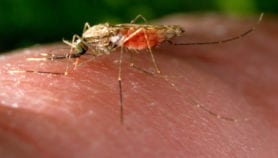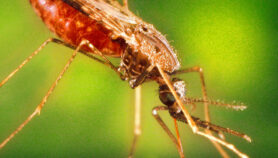By: Pablo Correa
Send to a friend
The details you provide on this page will not be used to send unsolicited email, and will not be sold to a 3rd party. See privacy policy.
[BOGOTA] People in densely populated highlands of Africa and South America — who have so far been protected from malaria by cooler temperatures — may be seeing more of the disease as the climate changes, according to a study in Science (6 March).
Mountainous regions with relatively cold climates that are unsuitable for the malaria parasite and the mosquitoes that transmit — but there have been indications, for example from modelling studies, that with climate change this protection will wear off.
Now scientists have used data from Colombia and Ethiopia spread over two decades to show that in warmer years malaria occurred higher up in the highlands there.
The researchers collected weather and malaria incidence data from 124 municipalities located in a mountainous area of central Colombia between 1990 and 2005 and from 159 areas in Ethiopia, between 1993 and 2005.
“Our results showed that despite being on two different continents, in these two highland regions, increases in temperature across years extended the spatial distribution of malaria cases to higher elevations,” the study says.
Daniel Ruiz Carrascal, one of the authors of the study and researcher from the School of Engineering of Antioquia, Colombia, tells SciDev.Net that the parasite and mosquito only find ideal conditions at temperatures above 21.5 °C.
In Colombia, in the 1950s the average was 50 days per year above this temperature, today that number has risen to 150, he says.
“We are having more and more favorable temperatures to have satisfactory reproduction of the parasite,” he says.
The study adds that climate change appears to have already influenced the burden of malaria in those regions.
In Ethiopia, where 43 per cent of the population lives between 1,600 and 2,400 meters above sea level, for each degree Celsius rise in temperature 410,000 new cases of malaria could occur each year, the team has previously found and reported in a 2009 study.
“Elevated potential transmission intensity, driven by warmer temperatures, will require even greater control efforts,” it says.
It concludes there is a need for public health policies “that mitigate the effects of climate change on malaria in highland regions, including those policies that extend and sustain the network of diagnostic and monitoring facilities. These measures should further contribute to the early warning of epidemics and assist global malaria elimination.”
Socrates Herrera, founder of Caucaseco research center in Colombia, who works on the development a malaria vaccine, tells SciDev.Net: “It’s a very serious study. I think they are documenting something that we have been suspecting in recent years, especially in highlands regions where we were not accustom to see malaria.”
And Ana Priscila Bascunan, a visiting scientist at Harvard School of Public Health, United States, says this is a good study because it chose two highly endemic areas for malaria on two continents.
She highlights that the study’s value is that “it demonstrates for the first time, and empirically, the potential consequences of climate change on the distribution of associated vectors such as the malaria disease”.
References
Science doi:10.1126/science.1244325 (2014)














